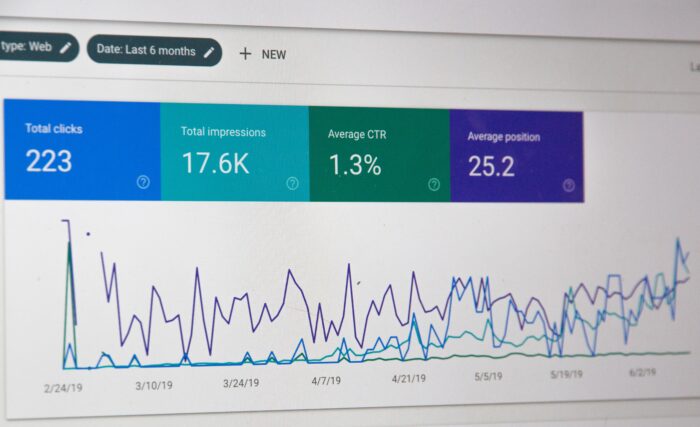
The ideas and criteria known as web design best practice serve to ensure that websites are aesthetically pleasing, user-friendly, and open to all users. The best practice for web design will be covered in this article, along with an explanation of how they might contribute to a satisfying user experience.
One of the most crucial best practice for web design is simplicity. A cluttered or too complicated website may be challenging to navigate, creating a negative user experience. Conversion rates can be increased and user engagement increased by using an intuitive and straightforward design.
Responsive design is yet another crucial best practice for web design. A website is optimised for all platforms, including PCs, tablets, and smartphones, thanks to responsive design. For mobile devices, which make up an increasing portion of website traffic, this can assist enhance the user experience and boost engagement.

Quick loading times are yet another crucial best practice for web design. High bounce rates, or the percentage of visitors who abandon a website without investigating it further, can result from websites that take too long to load. Enhancing user experience and loading speed can be achieved by optimising images and reducing file sizes.
A pleasant user experience depends on clear navigation. Navigation menus ought to be simple to use, easy to find, and have obvious labels. Users shouldn’t have to sift through numerous pages or menus in order to discover what they’re looking for fast and efficiently.
Consistency is yet another crucial best practice for web design. A website can look more unified and polished if its design, colour scheme, typography, and layout are consistent. By offering visual signals that facilitate website navigation, consistency can also help consumers have a better experience.

Ensuring that websites are accessible to all users, including those with impairments, is a crucial best practice in web design. Alt text for photos, captions for movies, and compatibility with screen readers and other assistive technology are just a few accessibility issues.
This fundamental best practice for web design is still another. The most crucial information should be displayed prominently on a website with a clear hierarchy of content, and the remaining material should be properly arranged. By making it simpler for consumers to access the information they need, a clear content hierarchy can enhance the user experience.
CTAs are crucial for increasing website conversion rates. CTAs should be easy to see, understand, and use. They must also be beneficial and pertinent to the user's needs.
White space is yet another crucial best practice for web design. The void space between design elements like text, photos, and graphics is referred to as white space. A clean and uncluttered design can be produced with enough white space, which also helps to increase readability and offer visual balance.
Testing and optimization are crucial best practice for web design. Continuously tracking website performance and making modifications to enhance the user experience are part of testing and optimization. A/B testing, heat mapping, and other analytics tools can be used to pinpoint website flaws and offer information on user behaviour.
High-quality material should be present on the website in addition to a clear content structure, according to web designers. The content must be well-written, educational, and pertinent to the needs of the user. By offering users interesting information, you may win their trust and get them to visit your website again.

Another crucial best practice for site design is branding. The brand’s identity and values should be reflected in a well-designed website. This can enhance brand recognition and help build a consistent brand image. Keeping branding components like the logo, colour scheme, typography, and tone of voice consistent can also aid in increasing brand recognition and establishing brand authority.
Testing a website with actual users to find usability problems and get feedback is a crucial best practice in web design. User testing can assist discover areas that need development and offer insightful information about how users interact with the website. The identification of user pain spots, such as sluggish loading times or challenging navigation, is another benefit of user testing.

SEO optimization is yet another essential best practice for site design. The process of SEO optimization entails improving the website’s content and architecture in order to raise its placement on search engine results pages (SERPs). This might increase visibility and organic traffic to the website. The use of pertinent keywords, the improvement of meta descriptions and titles, and the use of evocative alt text for images are all examples of SEO best practises.
This best practise in web design is creating a website first for mobile devices, then modifying it for desktop computers. By using this strategy, the website will be optimised for mobile devices, which make up an increasing portion of online traffic. A positive user experience depends on simplicity and usability, both of which are promoted by mobile-first design.

employing best practice in web design is crucial for enhancing customer satisfaction and increasing website conversions. Maintaining a straightforward, user-friendly design, making sure it is responsive, boosting loading times, offering clear navigation, consistency, accessibility, content hierarchy, CTAs, white space, testing, and optimization are all essential elements of web design that can enhance user experience and promote business success. Businesses may build a well-designed, user-friendly website that offers a great experience for their visitors, fosters growth, and contributes to success by adhering to these best practice.
We would love to work with you on your next project or breathe new life into an existing one. Speak to our experts today!
Contact us